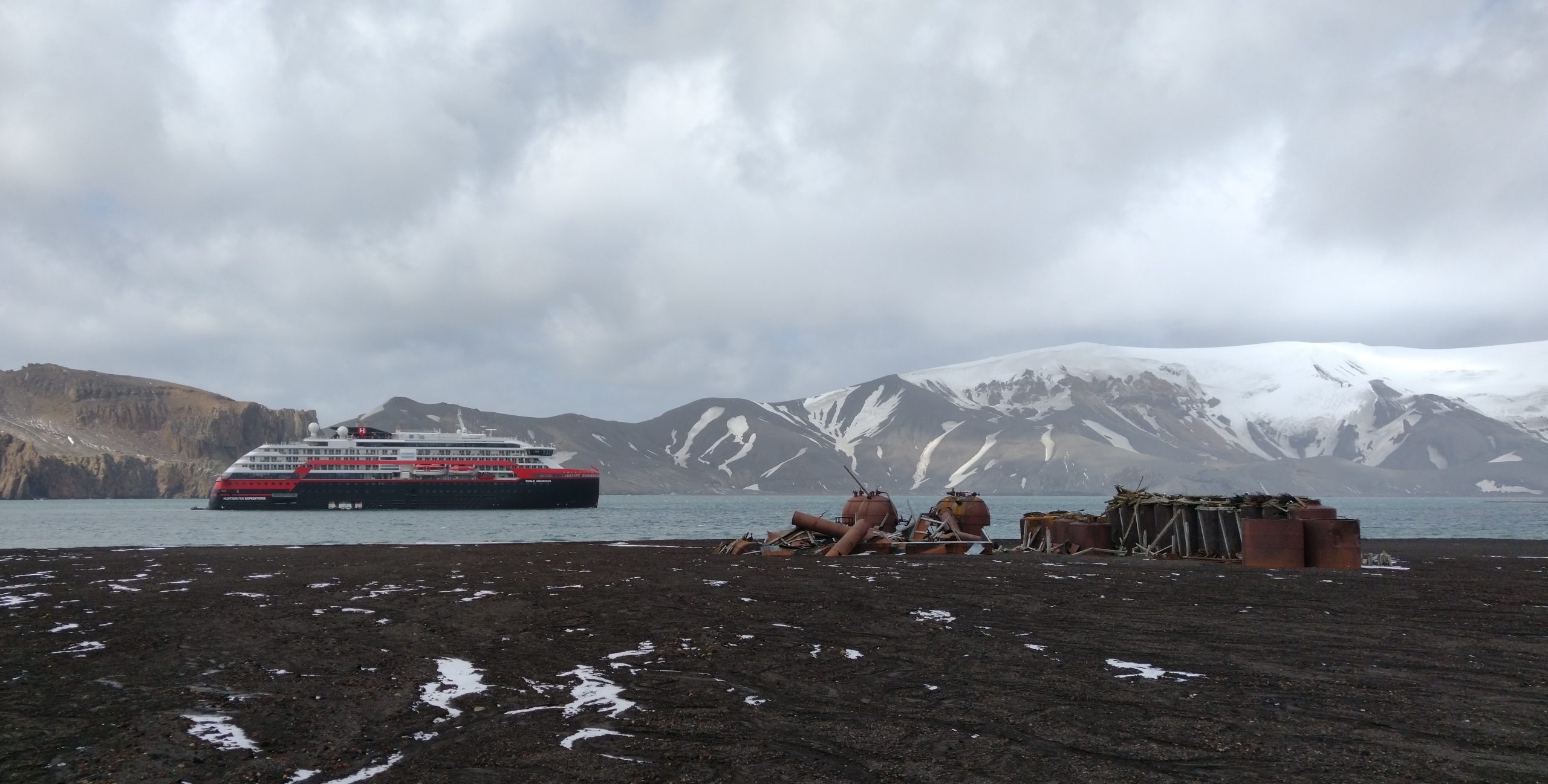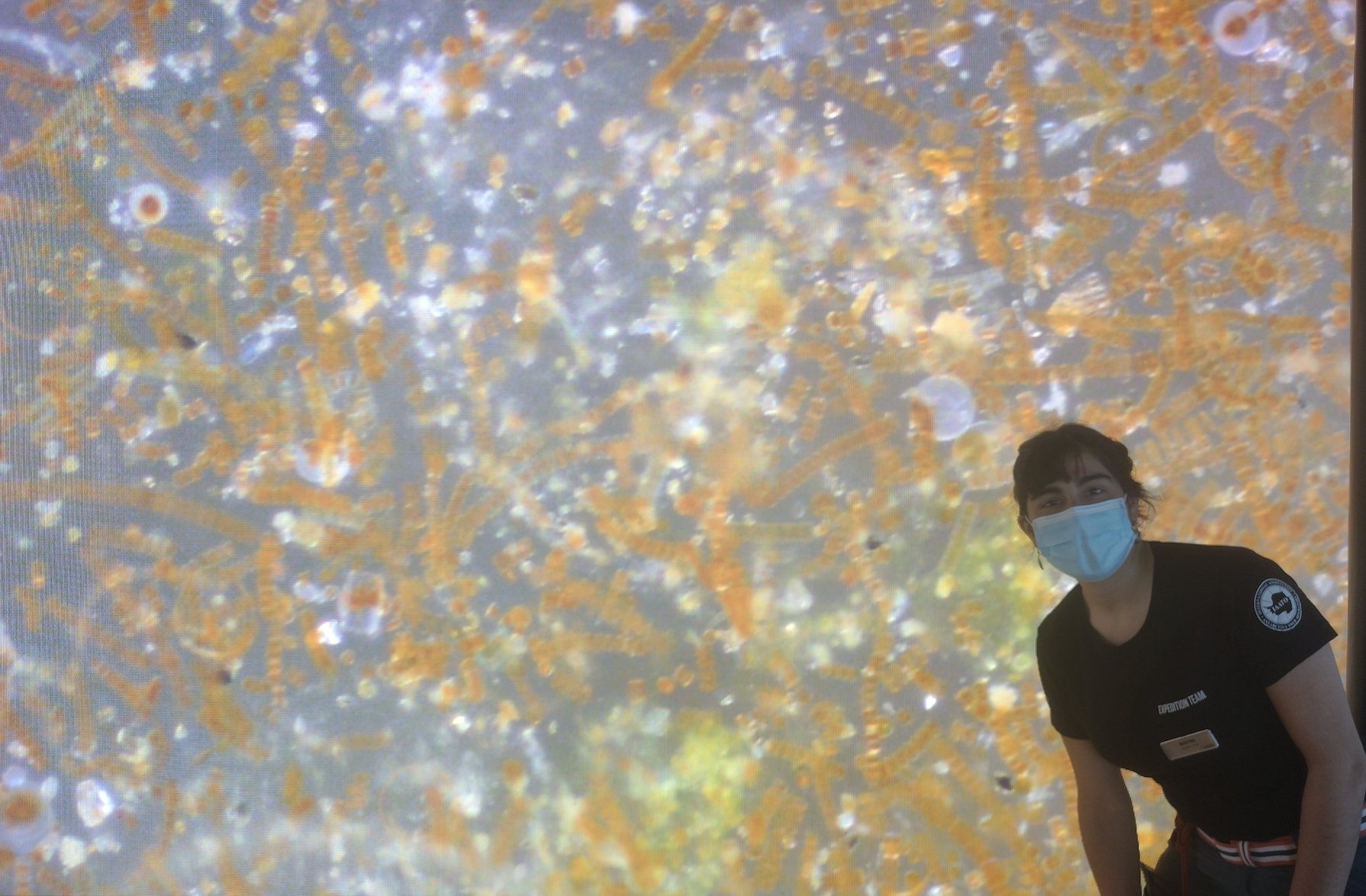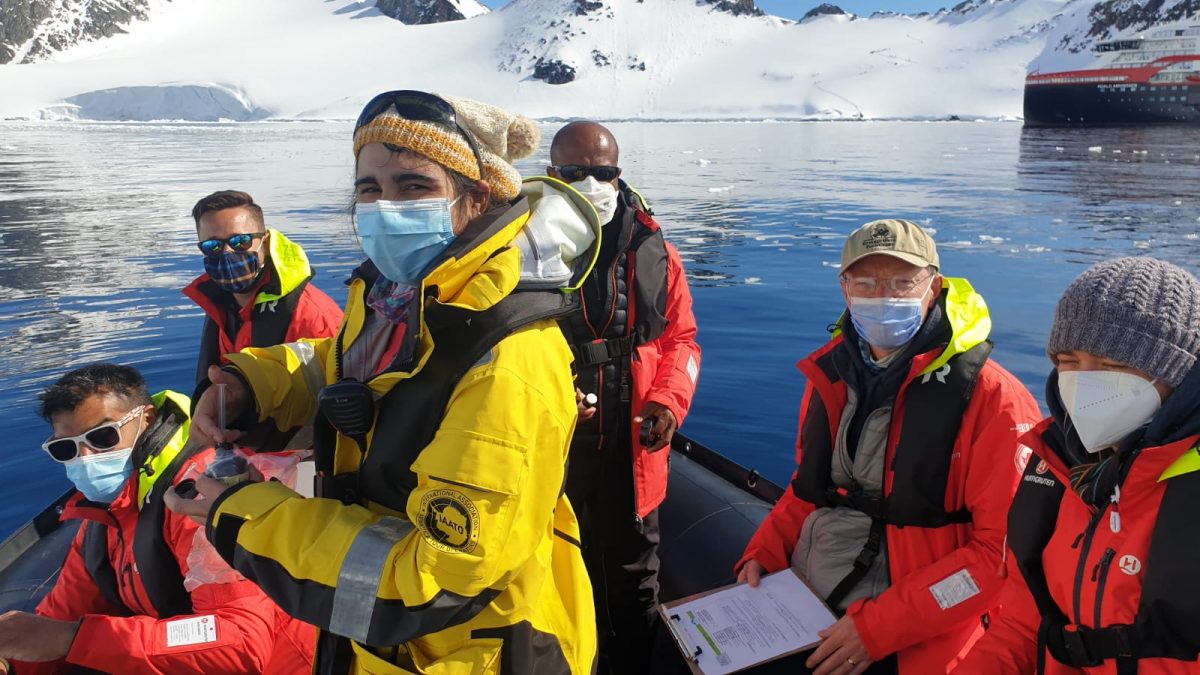Although I had been working with Antarctic phytoplankton since 2015, I had never had the chance to travel to the white continent. After six years of learning about the entire Antarctic continent only through photos, place names, stories, Google-searches and scientific articles, my anticipation of setting foot in Antarctica was growing. In addition, during the pandemic years, the complication of travel added a sense of uncertainty. Then finally, in November 2021, I was offered an opportunity to finally go and fulfil the dream! After getting past all the complications due to covid – I was on my way to Antarctica!
Hurtigruten Expeditions invited me to join the Expedition Team aboard the MS Roald Amundsen for two cruises to Antarctica. The cruise started on November 25th and completed on December 27th. I met so many amazing people and learned so much along the way but let me explain a bit more.

The trip begins
The ship left from Punta Arenas, Chile, and because I live in Buenos Aires Argentina, I had to first fly to Santiago de Chile and then to Punta Arenas. Conveniently, Argentina, Chile, and the Antarctic Peninsula are all in the same time zone, so even though I was miles away from home, I didn’t have to change my watch nor experience jet lag. Despite the stunning landscapes and waters that surrounded us, at times I almost felt like I had never left home.
On our journey, we sailed through the fjords of southern Chile and entered the Beagle Channel. The Beagle Channel is the southernmost waterway of the three continental connections between the Atlantic and Pacific Oceans. Because Argentina and Chile share the Beagle Channel, I was technically in Argentine territory!

After crossing the Beagle Channel, we began crossing the Drake Passage. This stretch of water hosts the roughest waters of the world. I started to feel a bit queasy (glad I packed some motion sickness pills), and luckily we didn’t experience the “Drake Shake”. Two days after sailing, we arrived at the South Shetland Islands Archipelago, which is the northernmost part of the Western Antarctic Peninsula. From here the rest is history!
Throughout my trip I had the opportunity to visit various places along the Antarctic Peninsula. I think there are no words or photos that can accurately describe what I felt in this place: the distance, the stillness, the wildlife, were only a few of the highlights. I never cease to be impressed with the height of the mountains and their snowy peaks, always reminding me of my beloved Cordillera de los Andes (Andes Mountains). Did you know that the mountains of the Antarctic Peninsula and the Andes belong to the same mountain range?
Sampling Phytoplankton
Furthermore, I had the opportunity to join the FjordPhyto Citizen Science Boat and engage with citizen scientists while taking samples for FjordPhyto, although the landscapes and the penguins overwhelmed me, the phytoplankton brought me here! This was my first chance to be part of the FjordPhyto sampling experience. I have been preparing for this moment for years and now I’m finally getting my hands wet in the cold water!

The experience was a complete success! We were able to sample from a total of 11 locations on the Peninsula and later in the Malvinas Islands (Falklands), with more than 70 interested passengers participating in the FjordPhyto project. I had the opportunity to test our new NASA-funded equipment, the RBR Ruskin CTD (Conductivity, Temperature, Depth profiler which measures salinity, temperature, and chlorophyll-a).
I couldn’t wait to return home to see the samples under the microscope, and luckily, I didn’t have to because we could do it onboard!

Another element that allows the participant experience with phytoplankton to be engaging – and what makes the FjordPhyto project a complete package – was the possibility of observing the phytoplankton samples on board in the amazing science center after we collected them from the water with thousands of beautiful diatoms to behold, we were able to identify different genera and species all thanks to our new Phytoplankton Identification Guide (prototype copy to be on sale soon).

Finally, I complimented my fieldwork with informative lectures on various topics: Phytoplankton ecology, the Antarctic food web, and diatoms. I was nervous at first, but then I got used to the talks, and I had very good feedback from the audience and also from the expedition teammates who had never heard of diatoms before … crazy, right? The talk on diatoms was my favorite, “Diatoms: the Jewels of the Sea”, and I guess it was the guest’s favorite too, because everyone expressed how much they loved these amazing microscopic gems!


I want to say a huge thank you to the crew of the MS Roald Amundsen, the Expedition Team, the Chief Scientist, Verena Meraldi, and the Scientific Coordinator on board, Zoe, who helped me a lot and made everything possible.
